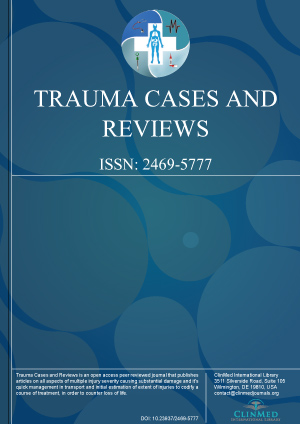Archive
Open Access DOI:10.23937/2469-5777/1510103
Early and Isolated Cerebral Fat Embolism in a Trauma Patient with Multiple Fracture - A Case Report
Adriano Braile, Carlo Maurea, Giuseppe Toro, Antonio Bove, Nicola Orabona and Giovanni Matino
Article Type: Case Report | First Published: 2024/03/03
Fat embolism syndrome (FES) is defined as the presence of fat particles (i.e., > 100 particles per mm2) in the blood circulation that result in symptoms and/or organ failure. FES could result from mechanical causes, trauma or sepsis and, even if very rare, is a fatal disease that develops within 12-72 hours. FES manifestations can vary from mild cognitive changes to coma and even cerebral edema and brain death. The exact incidence of FES stemming from traumatic long bone injuries varies in liter...
Article Formats
- Full Article
- XML
- EPub Reader
Open Access DOI:10.23937/2469-5777/1510102
Roberto Taarea, DO, Abigail Florence, MD, Blake Bendixen, MD and Christine A Castater, MD
Article Type: Case Series | First Published: 2024/02/10
Abdominal defects resulting from emergency open abdominal (OA) procedures require complex treatment algorithms and continue to burden both patients and healthcare providers due to increased risk of morbidity and complications. When primary closure of the abdominal subcutaneous and dermal tissues cannot be achieved, negative pressure wound therapy (NPWT) is among the most common treatment options. ...
Article Formats
- Full Article
- XML
- EPub Reader

Volume 10
Issue 1
Issue 1
